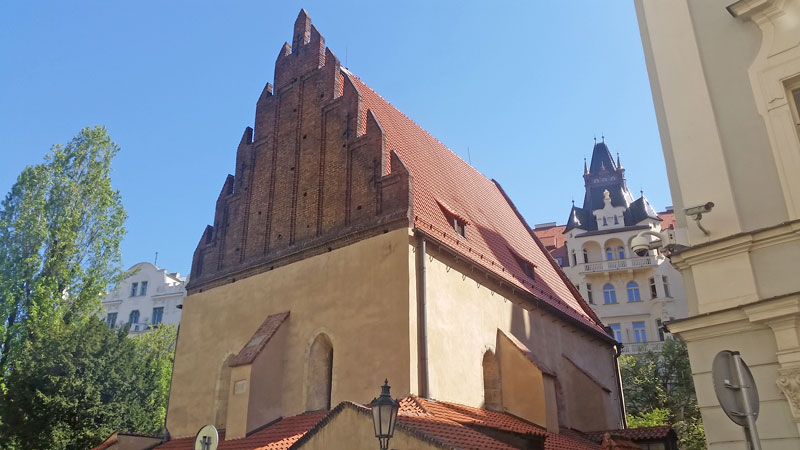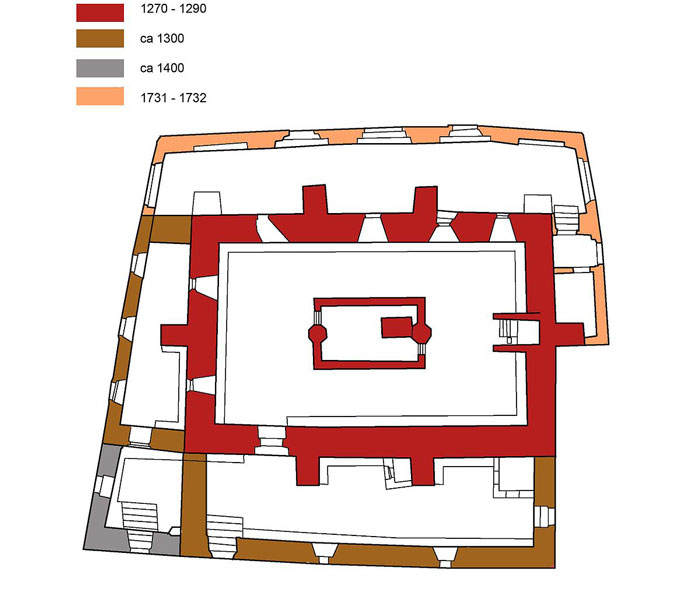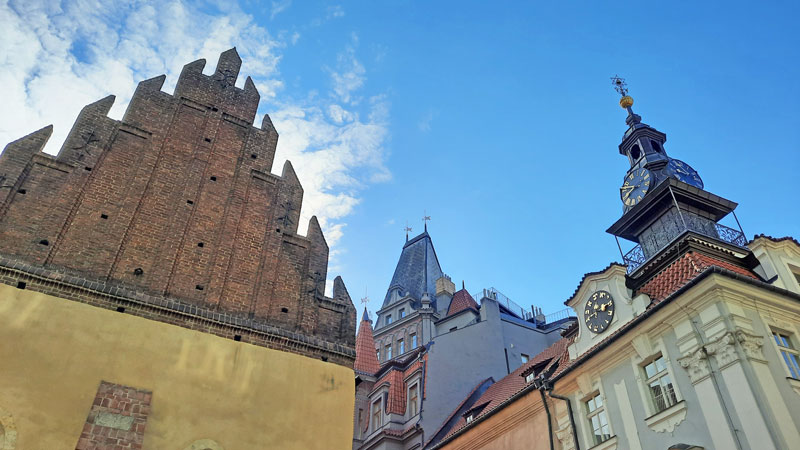Prague Old New Synagogue
The Prague Old New Synagogue is one of 6 synagogues in the Josefov district of Prague 1 (only 5 synagogues are publicly accessible). Where you see references to the Old Town it’s because the Old Town completely surrounds Josefov. Here I’ll give you an introduction and a few tips for visiting.

The Prague Old New Synagogue is a Strange Name
Let’s deal with the name. Before 1867 where the present day Spanish Synagogue now stands, there once stood a much older synagogue. Records show it opened around the year 1230 and was called the Old School (a clue is in the name of the road that runs around it which is called U Staré Školy – at the place of the Old School). Its associated faith was Conservative Judaism. The Jewish Orthodox population decided to build their own synagogue and they called it the Great Synagogue or the New Synagogue. From the late 16th Century when other synagogues were built then it received it’s final name i.e. Old New Synagogue (check the legends below). Guidebooks will also call it the Maharal Synagogue after the famous Prague Rabbi Loew (the Maharal). So as it opened in 1270 the Prague Old New Synagogue is currently the oldest working synagogue in central Europe.
Small But Perfectly Formed
When you go in you get your ticket scanned and men collect a skullcap if they don’t already have one. The first thing you’ll think is “this is really small”. The original Prague Old New Synagogue that is the central part, was not designed or built by Jewish people. Quite simply in the 13th Century they did not have the permission to offer building or architectural services. Therefore, it was built by Christians using the Gothic structural design of the period including the internal vaulted ceilings supported on octagonal columns and external buttresses i.e. a very small version of a Gothic church. The picture shows how the ground plan evolved. But the Orthodox Jewish community had some very specific requirements.

1) The building is on the East-West axis to allow the Torah Ark to be on the end that faces Temple Mount in Jerusalem.
2) The building was designed so that the ground floor of the synagogue was actually beneath ground level because Psalm 130:1, “Out of the depths, I cry to Thee, O Lord” is read out loud after the Shabbat afternoon prayer.
3) Incorporated in the design is the number 12. The original building has 12 windows. The decoration above the Torah Ark has 12 vines and 12 bunches of grapes. This 12×12 design is also repeated on the Bimah and references the original 12 tribes of Israel.
4) The building interior size allowed for chairs and writing tables (churches of the time rarely had chairs and never tables).
5) The original central hall had no space for women. A 14th Century annex was added to the Maiselova side to allow Orthodox Jewish Women to hear but not see the service (see picture above). Later an 18th Century annex was added (on the park side facing north with entry from Paris Street) which expanded the capacity for women to attend. Curiously they never linked the two annexes and they are not accessible to the public.
6) Not part of the original construction but there was a significant roof upgrade in the late 15th Century which changed a simple Gothic pitched roof into a saddle roof and added a German Brick Gothic gable on the western facade. Unusual because Brick Gothic was a style that was found in places that did not have an abundance of stone, which Prague had.

Legends
The main legend here is that the character made out of earth and clay known as the Golem, was supposed to have been buried in the attic so for more on that read the Golem post. Finally the name gets questioned again. Old/New, or in German which would have been widely spoken at the time Alt/Neu, which is suspiciously similar sounding to the Hebrew Alt/Nay which means “on-condition”. Strange, until you consider that the legend is that the building contains stones from Temple Mount and that these stones are only loaned to the synagogue “on-condition” that they be returned when needed.
Local Tips
First check the Skip the Line Tips and Tricks post for a couple of ways to beat the queues. There is a ticket office opposite the entry but it’s also the Judaica shop so there can be queues. You can visit the Prague Old New Synagogue on it’s own but if you intend exploring the Jewish Area then it’s normally 4th on the list after Pinkas, Old Jewish Cemetery, Klausen and the Ceremonial Hall. Be aware that unlike the other synagogues the Old/New closes an hour before dusk on Fridays. Technically the Prague Old New Synagogue is not part of the Jewish Museum but in any of the synagogue ticket offices you can by tickets which include entry here as well.
Something Related or a Few Minutes Away
Jewish Prague – Pinkas Synagogue National Holocaust Memorial
Jewish Prague – Journey of a Torah Scroll
Jewish Prague – Destruction of the Jewish Ghetto
Paris Street – Rebuilding the Jewish Quarter
Attractions – Spanish Synagogue
Monuments – Franz Kafka Statue
